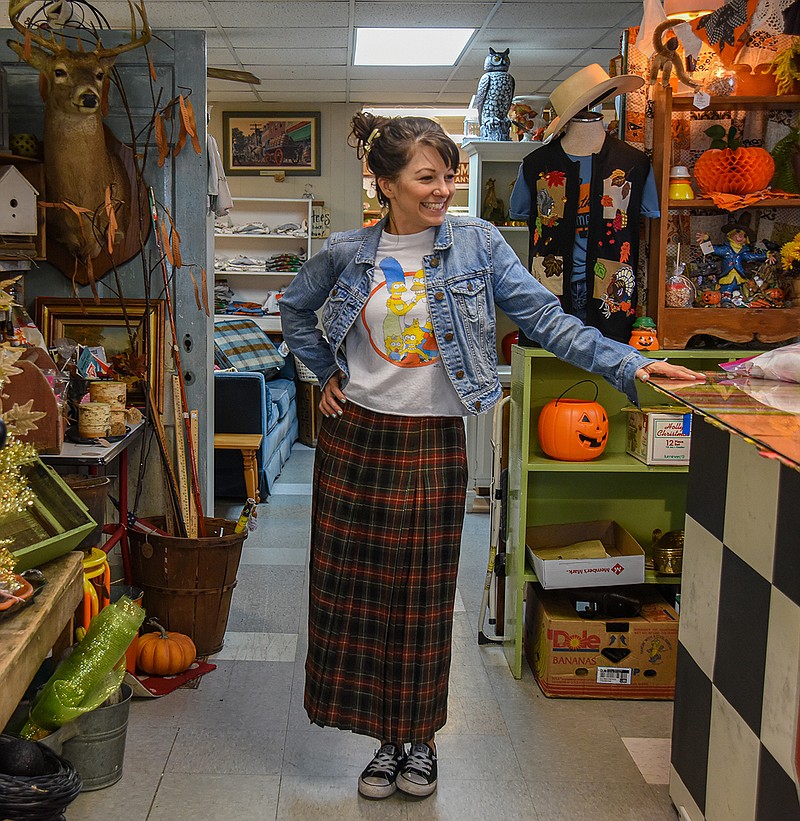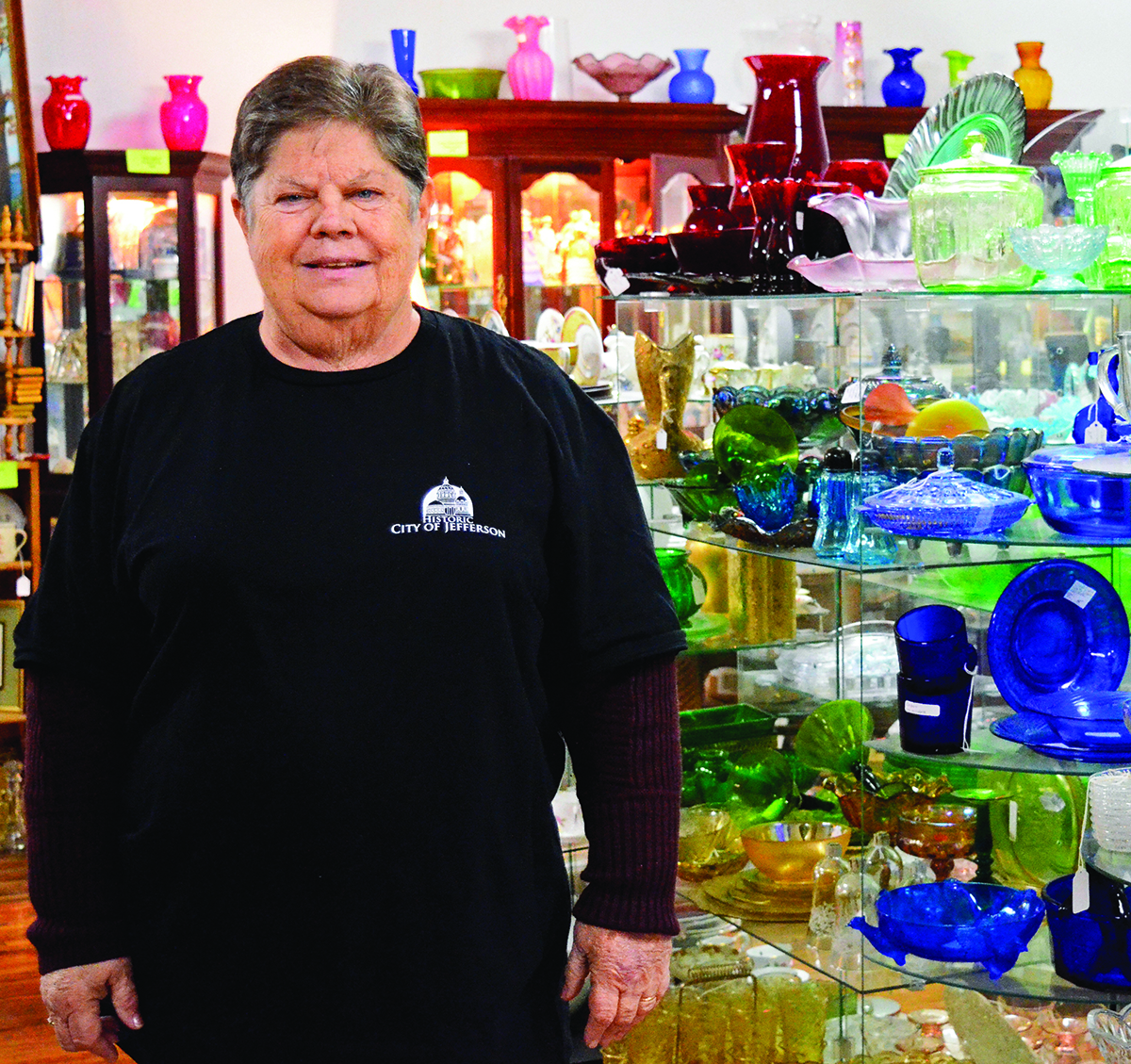Vintage.
What popped into your head when you read that word? Maybe it was your vinyl records collection, a bright boho 1970s blouse, an electronic game you played as a child or furniture that was in your grandparents’ house.
Over the last few years, vintage items have become trendy — from clothing to collectibles to decor. And with social media, particularly TikTok, finding inspiration is in no shortage — taking the vintage industry by storm.
But what exactly is “vintage?” Antiques are items at least 100 years old, according to 19 Code of Federal Regulations (CFR) § 10.53. So, individuals talking about vintage items are typically referring to products younger than that threshold.
Past that, it’s relative to the person talking about the item, says Donna Deetz, owner of Click2Sell4U/Kay’s Collectibles. Someone in their 70s would most likely consider items from the 1950s and ’60s vintage, while a Gen-Zer may consider something from the 1980s or ’90s to be vintage. Some items, like electronics, may be considered vintage if they are older than 10 years, Deetz adds.
Individuality
J Street Vintage owner Lizzie Lou Harlan jokes she was a “hippie fifth-grader” who adored vintage from a young age. Today, Harlan is still recognized for her style, often receiving compliments about her unique skirts, blouses and jewelry.
“With vintage clothes, you’re so much more of an individual,” she says.
When you think of vintage clothes, polyester pants and bright ’70s blouses may come to mind. But vintage clothing is so much more than that, Harlan says. It could be simply wearing a simple vintage black blouse with regular jeans, or maybe adding a stylish brooch that your grandmother wore.
And with social media, you could find dozens of ways to style particular vintage clothing and accessories.
“We don’t have to go to a department store to tell us what to wear,” Harlan says. “We can get an idea and use the internet to spin different ideas.”
Individuality from all things vintage extends beyond fashion though.
A majority of the items sold at Click2Sell4U/Kay’s Collectibles were brought in by individuals who either lost a spouse or parent, or who were trying to downsize, Deetz says. This means she sees unique items come through the store doors daily — and every item has an individual story. For example, Deetz described handcarved sandals, lattice work mahogany and silk tapestries that were once owned by a woman who lived in Okinawa and moved to the United States. Following her death, her family — understanding these items could never be duplicated today — took them to Click2Sell4U/Kay’s Collectibles so they could go to a new owner.
“Just as in historic preservation of homes, such as those along Capital Avenue, it is the stories that excite me about what comes into our shop,” Deetz says. “There is a story about why that person collected camels or what started them collecting 300 Snow Village houses. Anytime you tell a story of one individual, stories emerge about others affected by those collections or that person.”
It’s not just the special stories that attract vintage seekers. Many are drawn to items that remind them of special moments in their lives, such as furniture that pricks a childhood memory of going to grandma’s house.
Copycat vintage
With the growing popularity of vintage, box stores have jumped on the bandwagon, selling mass-produced “vintage” items — what Deetz calls “copycat vintage.” Shoppers can now find 1990s “mom jeans” and furniture that have 1940s and ’50s appearances in stores like Walmart and Target.
The quality of “vintage” products from box stores versus items sold in local shops differ immensely though, Deetz and Harlan say. You could purchase a barrister bookcase at a furniture store today, but it will be made of particle board that will result in sagging shelves over time, Deetz says, compared to real-wood furniture that was made to last 50-plus years. The same logic extends to the trendy mom jeans.
“I was shocked to see mom jeans at a big store, and it was so frustrating because we hunt to make sure we have the best supply of real denim in our store and now you can get fake vintage denim that’s not even denim,” Harlan says.
Repurposing your grandmother’s glasswear instead of buying new, vintage-looking glasses from a box store also means less items end up in the landfills — a selling point in today’s increasingly environmentally-conscious society.
“Instead of filling sites with so much of today’s trash, a vintage dish has stood the sands of time and even if it breaks after long use, it is better than the thousands of other disposable dishes that were thrown away in its place,” Deetz says.
While vintage trends are helping local shops and the environment, it does come with some downsides. Genuine collectors are beginning to be “bogged down with all the impulse collectors” — individuals who purchase vintage items purely because they know they are rare, not because of their stories or associated memories, Harlan says.
And while social media has helped inspire people — particularly younger generations — to find creative ways to incorporate vintage items into their styles, it has also created trends that can sometimes take away from its uniqueness.
“If you’re following a trend, you’re not unique — you’re just copycatting,” Harlan says.
Thrill of the hunt
If you want a particular vintage item, you may be tempted to hop onto Etsy or eBay. Harlan recommends shoppers experience the “thrill of the hunt” and attempt to find the authentic items “in the wild.”
“There are certain things I wouldn’t appreciate as much if I didn’t inherit, receive it in the gift, or find it naturally,” Harlan says. “It’s like cheating — going to a stocked pond to catch a trophy bass. It’s not the same.”
If you want to add a unique collectible to your house, Deetz and Harlan say, chat with your parents or grandparents about products they have. You may be amazed at some of the items they have in storage, such as wedding china. Estate sales, antique resale shops and garage sales are also prime locations to score vintage treasures.
“In the big picture, you’re helping small businesses because you won’t find authentic vintage at a chain,” Harlan says.
Vintage shopping comes with its own challenges though, Harlan cautions. Customers should educate themselves on how to handle vintage items to avoid destroying them. For example, many jeans aren’t labeled by today’s sizing chart — they are labeled by the waist size. If a customer doesn’t know her waist size, she could rip the zipper or bust one of the buttons if not careful. And local resale stores are more likely to feel those damages in their bottom lines than box stores, Harlan says.


